Global digital textile printing market is estimated to be valued at USD 2.90 Bn in 2025, and is expected to reach USD 4.75 Bn by 2032, growing at a compound annual growth rate (CAGR) of 7.3% from 2025 to 2032.
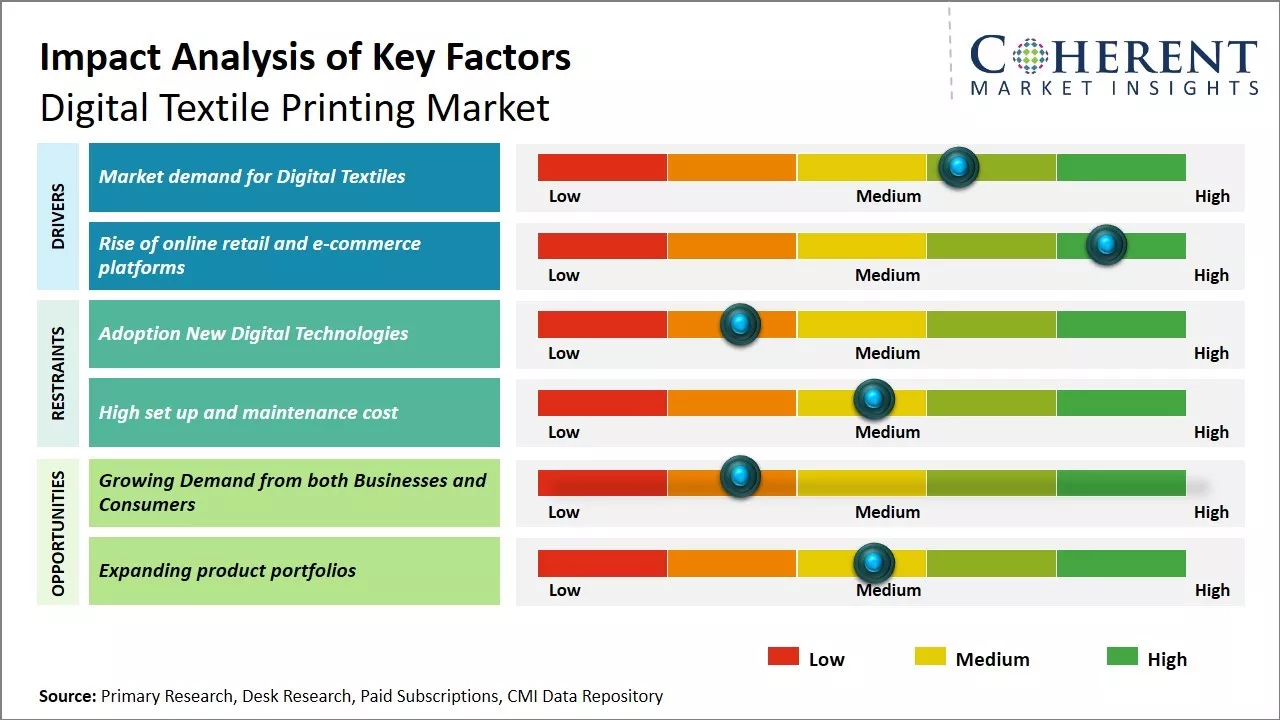
Discover market dynamics shaping the industry: Request sample copy
Global digital textile printing market is expected to witness significant growth over the forecast period due to rising demand for customized and personalized textile printing across various end-use industries. Growing adoption of digital printing over traditional screen and analog printing due to benefits such as reduced wastage, on-demand printing, versatility and shorter lead time is expected to boost demand for digital textile printing. Furthermore, expanding textile industry and rising demand for advanced textile from fashion and interior décor industry are expected to drive the digital textile printing market in the near future. However, high capital investment and operational costs associated with digital printers may hinder the growth of the market to some extent over the forecast period.
Market demand for Digital Textiles
The demand for digital textile has been steadily increasing over the years. With digital printing, short run and on-demand printing of textiles has now become possible, allowing for greater personalization and customization of textile products. This has opened up new opportunities for low volume printing which was previously not feasible through traditional textile printing methods. Consumers now want clothing and home furnishing products that reflect their individual tastes and personality. Digital textile printing helps to meet this need by enabling on-demand printing of different designs, in small batches if required. Apparel manufacturers and textile retailers have been quick to recognize the potential of digital printing to meet this demand. These manufacturers have started offering a wide variety of fashion products printed digitally, featuring unique, eye-catching patterns and graphics. This has captured consumers' interest and driven their preferences towards digitally printed textiles. The appeal of bespoke, exclusive textile products tailored to individual tastes and interests is a major factor boosting demand for digital textile printing technology.
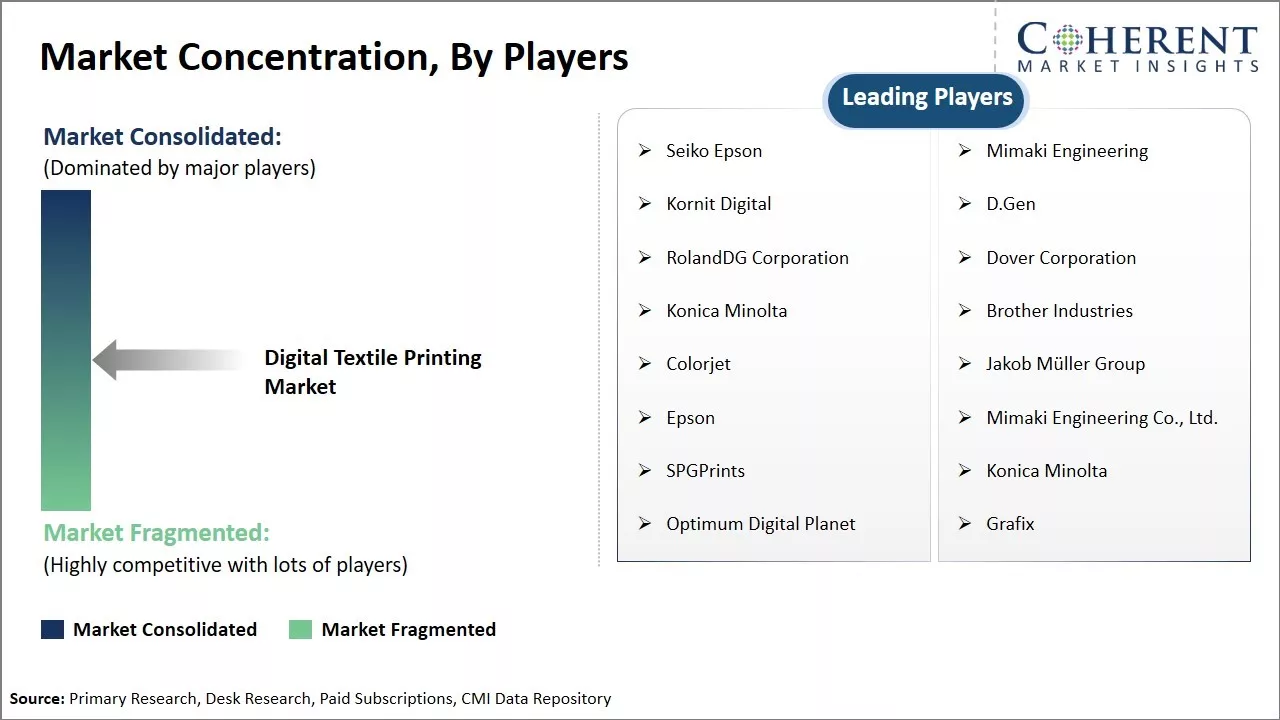
Get actionable strategies to beat competition: Request sample copy
Rise of online retail and e-commerce platformsRising prominence of online retail and e-commerce is expected to drive the market growth. For instance, according to Pew Research Organization, online sales accounted for approximately 16.3% of total retail sales in the fourth quarter of 2022, a substantial increase from the 16.1% observed in 2021. In the digital era, online retail channels have proliferated across industries including textiles and apparel. The consumers are increasingly turning to e-commerce sites and brands' own websites to shop for their fashion and home ware needs. For manufacturers and retailers catering to this lucrative online retail market, digital printing offers a highly advantageous production method. It enables on-demand printing of variable designs in-house, without long setup times or high minimum order quantities associated with traditional textile printing methods. This makes it simpler for e-commerce businesses to offer a wide variety and constant replenishment of unique printed textile products on their websites and keep up with fast changing consumer demands and trends. Digital textile printing is highly suitable for producing small batches of clothing, furnishings and other items with personalized or limited edition prints to maintain customer interest on e-stores. The synergies between digital textile printing and online retail channels are compelling the rapid adoption of this technology for serving the evolving needs of digital commerce.
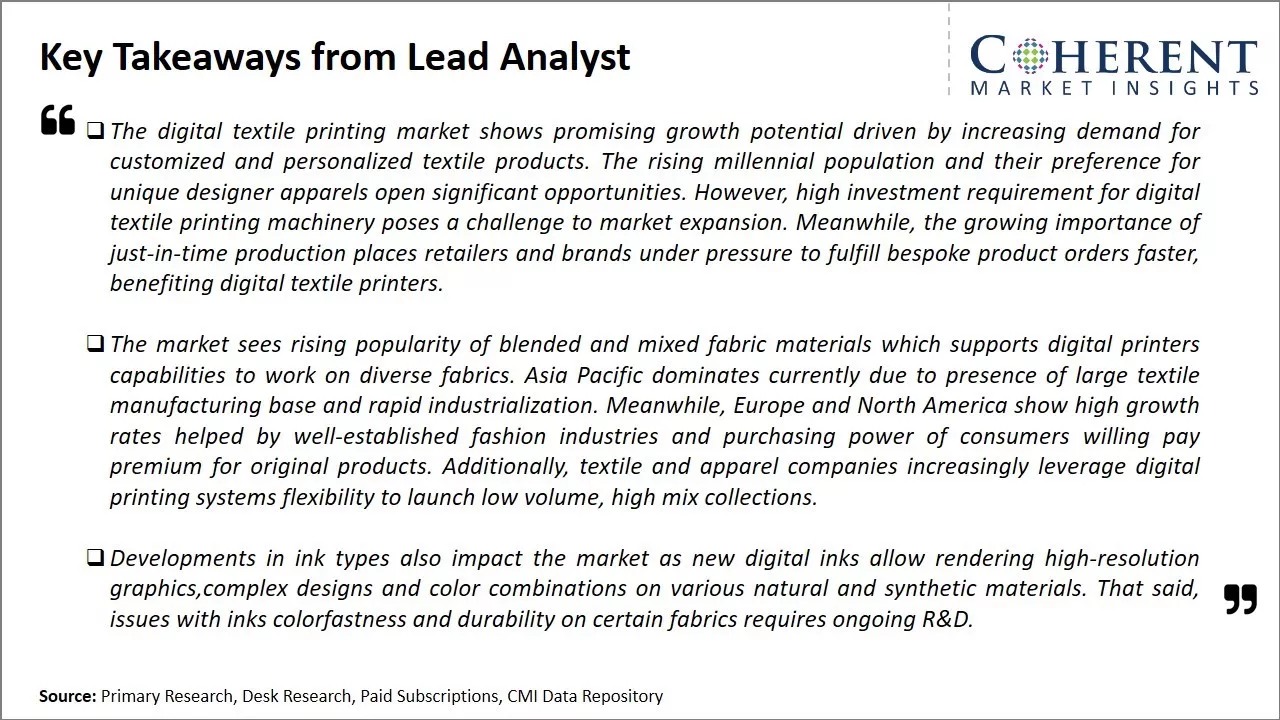
To learn more about this report, Request sample copy
Market Challenges: Adoption of New Digital TechnologiesGlobal digital textile printing market faces several challenges. Established textile manufacturers had invested in traditional printing capabilities and may be reluctant to adopt new digital technologies. Digital printers are capital intensive, requiring large upfront expenditures. Digital printing is still developing and has limitations in the types of fabrics it can print on as compared to traditional methods. There are also challenges around print quality and replication which can impact customer acceptance.
Market Opportunities: Growing Demand from both Businesses and Consumers
On-demand printing allows for lower minimum runs and more design flexibility. This ability to personalize and customize textiles efficiently meets growing demand from both businesses and consumers. As the technologies advance, digital printing will be capable of replicating more complex designs and patterns on a wider range of fabrics. It also offers benefits around reducing textile waste and being more environmentally sustainable compared to traditional methods.
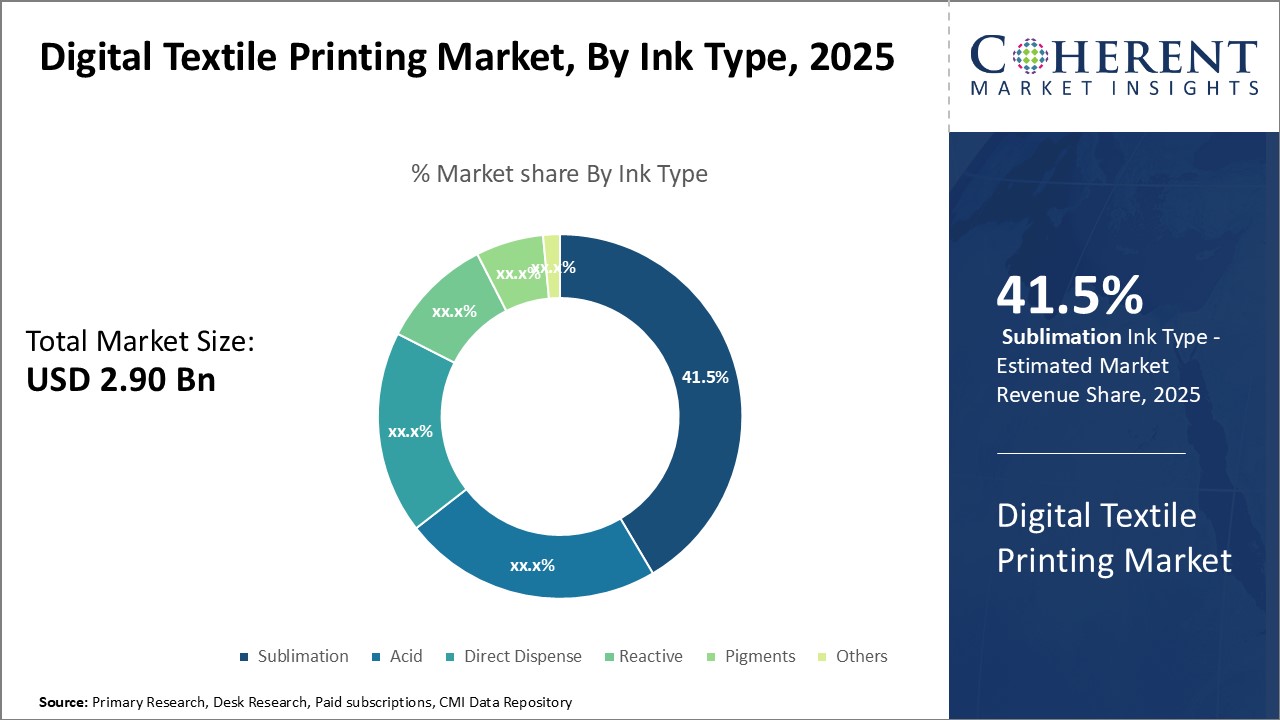
Discover high revenue pocket segments and roadmap to it: Request sample copy
Insights, By Ink Type: Dye versatility drives growth in sublimation inksIn terms of ink type, sublimation segment contributes the 41.5% share of the market in 2025 owing to the versatility of sublimation dyes. Sublimation inks allow for vibrant colors and high color saturation due to the properties of sublimation dyes. These dyes can be heated to change from solid to gas without passing through the liquid phase, which embeds the colors deeply in the fabric fibers. This ensures colors remain fast over time, and are resistant to washing and rubbing. The wide range of sublimation dyes available also provide printers with greater scope for creativity and customization as compared to other ink types. New developments in dye chemistry are further expanding color gamuts. Sublimation inks are also ideal for printing on polyester and poly-blend fabrics most commonly used in apparel, as the dyes bond well with these materials.
Insights, By Substrate: Natural affinity drives cotton printing
In terms of substrate, cotton segment contributes the 41.7% share of the market due to its natural affinity with various printing technologies. Being a natural fiber, cotton has an inherent porosity that makes it absorbent to inks and dyes. This facilitates greater color yield and impact. Advances in ink and pretreatment formulations have optimized printing outcomes on cotton. Its breathability and skin-friendly qualities have also cemented cotton's popularity in apparel. A large portion of the apparel market still relies on cotton due to consumer preferences for the material's comfort. As such, cotton enables high-quality, vibrant printing and remains a worthy substrate.
Insights, By Operation: Direct printing streamlines operations
In terms of operation, direct to garment segment contributes the 41.73% share of the market owing to the operational efficiencies it offers. Direct to garment printing eliminates intermediate steps between fabric printing and garment manufacturing. It allows printing customized designs directly onto readymade or semi-finished garments. This integrated process is faster and reduces costs compared to traditional transfer printing methods. It enables on-demand printing and minimum fabric wastage. Better colorfastness is also achieved through direct contact between ink and fabric. The advent of multi-needle inkjet printers capable of printing on complex garment contours has boosted the popularity of direct to garment printing.
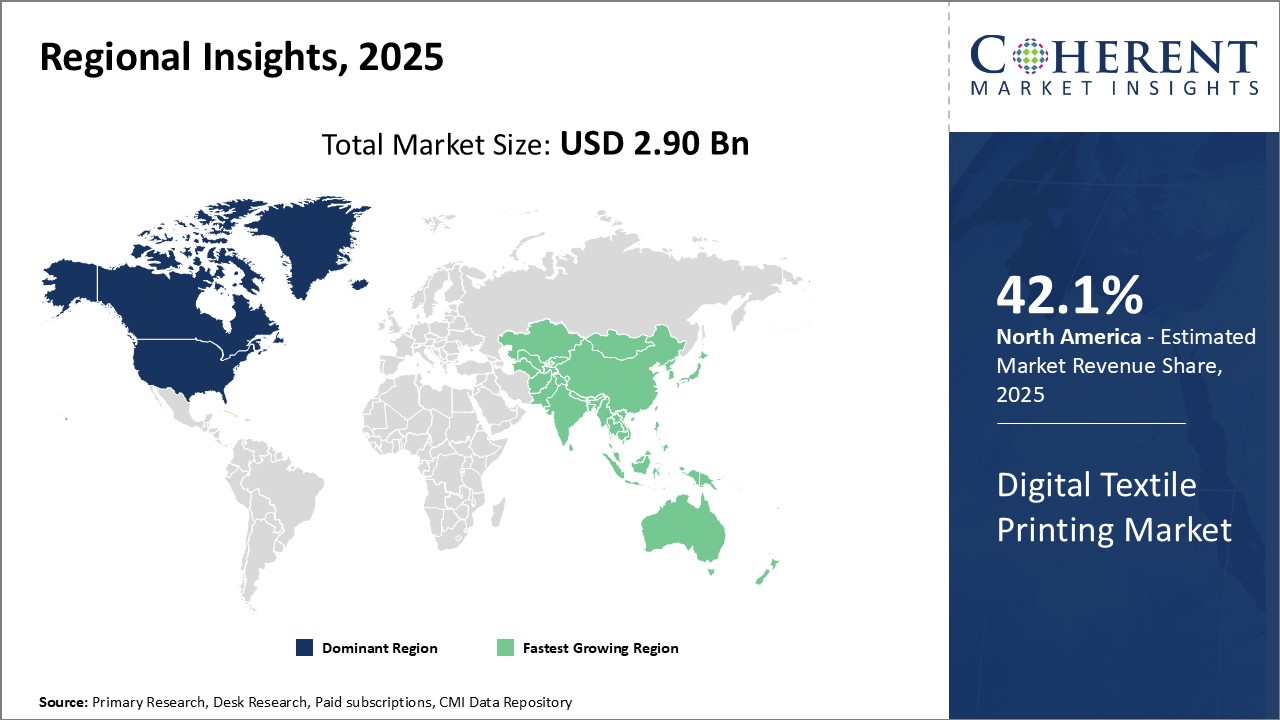
Need a Different Region or Segment? Customize now
North America has established itself as the dominant region in the global digital textile printing market with 42.1% share in 2025. The presence of leading manufacturers and technology providers in the U.S. and Canada has allowed the region to develop strong expertise in the field. Major brands have their production and R&D facilities based in North America in order to gain early access to the latest innovations. As a result, textile printers developed for the North American market tend to be the most advanced globally with highest level of features and capabilities.
The Asia Pacific region has emerged as the fastest growing market for digital textile printing worldwide. Having the largest textile manufacturing base globally means the region stands to gain immensely from the technology's benefits. Countries like India and China are aggressively pushing for adoption of digital printing to enhance productivity and turnaround times of their export-oriented industries. Local governments provide subsidies and incentives to encourage printers' upgrades as well as establishment of new printing facilities. The growing exports of ready-made garments, furnishing fabrics and technical textiles from Asia have propelled regional market growth. Increased foreign investments in special economic zones have also introduced international brands to the potential of Asia's manufacturing capabilities coupled with digital textile printing. Many leading global apparel brands are partnering with local manufacturers and gradually shifting their bulk production to Asia. The abundance of raw materials, low production costs and strategic focus on exports makes Asia Pacific the fastest maturing market for digital textile printing globally.
Digital Textile Printing Market Report Coverage
| Report Coverage | Details | ||
|---|---|---|---|
| Base Year: | 2024 | Market Size in 2025: | USD 2.90 Bn |
| Historical Data for: | 2020 To 2024 | Forecast Period: | 2025 To 2032 |
| Forecast Period 2025 to 2032 CAGR: | 7.3% | 2032 Value Projection: | USD 4.75 Bn |
| Geographies covered: |
|
||
| Segments covered: |
|
||
| Companies covered: |
Seiko Epson, Mimaki Engineering, Kornit Digital, D.Gen, RolandDG Corporation, Dover Corporation, Konica Minolta, Brother Industries, Colorjet, Jakob Müller Group, Epson, Mimaki Engineering Co., Ltd., SPGPrints, , Optimum Digital Planet, Grafix |
||
| Growth Drivers: |
|
||
| Restraints & Challenges: |
|
||
Uncover macros and micros vetted on 75+ parameters: Get instant access to report
*Definition: The digital textile printing market involves the production of textile goods like fabrics, garments, home furnishings and others using digital printing technologies. These technologies allow printing designs, images, patterns, graphics and text directly onto the textile substrates without the need of screens. Digital printing offers benefits like quicker turnaround times, lower setup costs, unlimited design flexibility and small volume production runs which is driving the demand for digital textile printing solutions in apparel, home and technical textiles industries globally.
Share
Share
About Author
Yash Doshi is a Senior Management Consultant. He has 12+ years of experience in conducting research and handling consulting projects across verticals in APAC, EMEA, and the Americas.
He brings strong acumen in helping chemical companies navigate complex challenges and identify growth opportunities. He has deep expertise across the chemicals value chain, including commodity, specialty and fine chemicals, plastics and polymers, and petrochemicals. Yash is a sought-after speaker at industry conferences and contributes to various publications on topics related commodity, specialty and fine chemicals, plastics and polymers, and petrochemicals.
Missing comfort of reading report in your local language? Find your preferred language :
Transform your Strategy with Exclusive Trending Reports :
Frequently Asked Questions
Joining thousands of companies around the world committed to making the Excellent Business Solutions.
View All Our Clients
US Reciprocal Tax Impact Analysis On Digital Textile Printing Market
Stay updated on tariff changes with expert insights and timely information